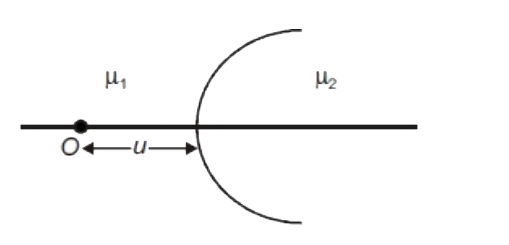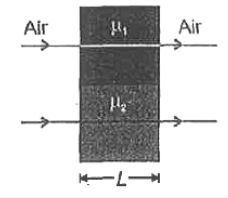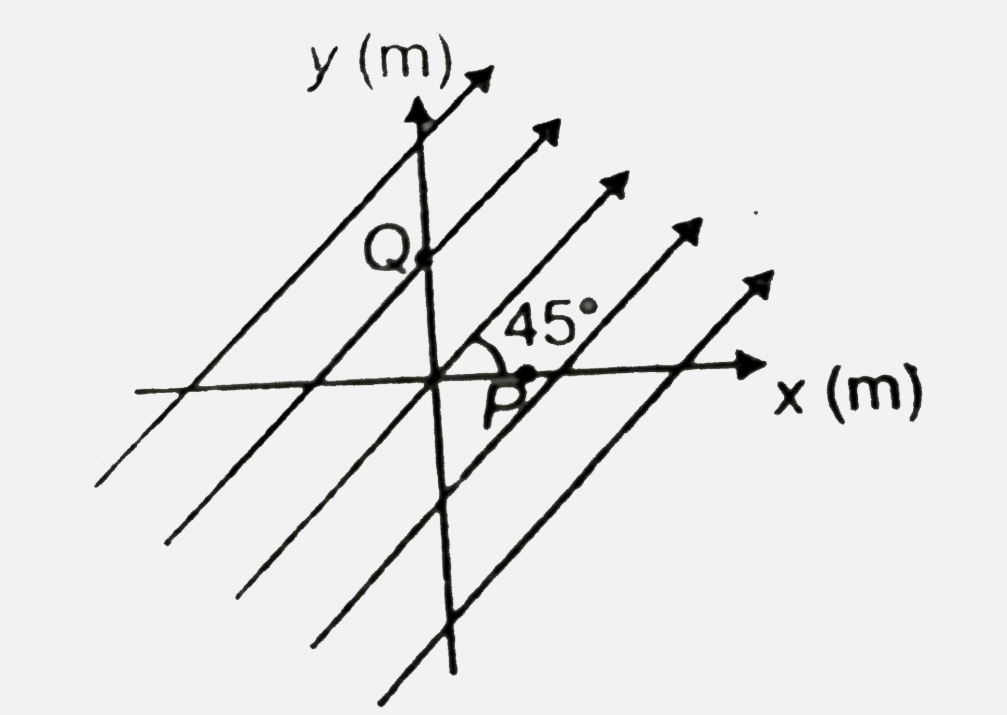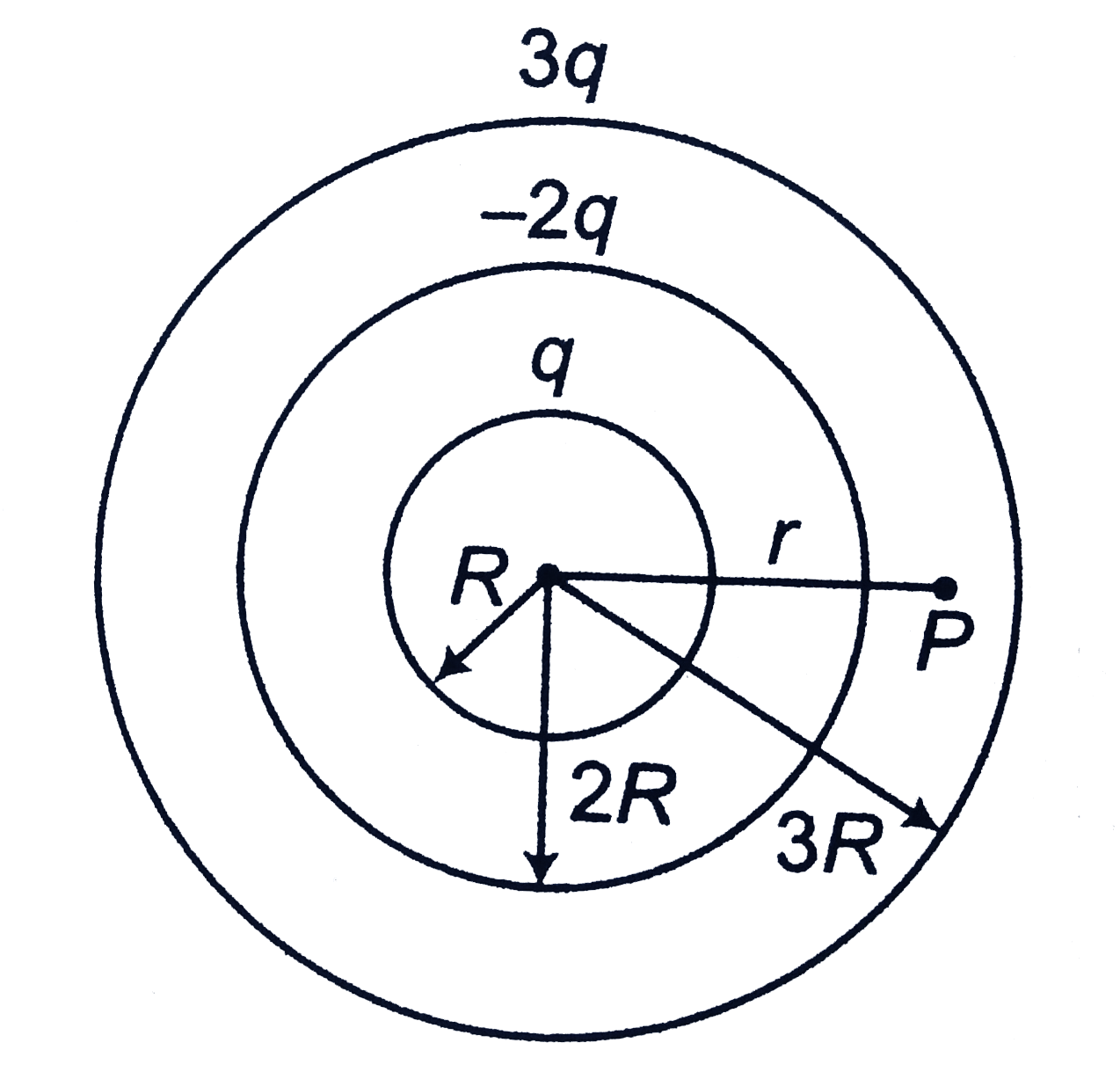![An electromagnetic wave of wavelength lamda(0) (in vacuum) passes from P towards Q crossing three difference media of refractive index mu,2mu and 3mu respectively as shown in figure phi(P) and phi(Q) be the phase of the wave at points P and Q. Find the phase difference phi(Q)-phi(P). [take mu=1]](https://d10lpgp6xz60nq.cloudfront.net/physics_images/ALN_PHY_C08(III)_S01_022_Q01.png)
An electromagnetic wave of wavelength λ0 (in vacuum) passes from P towards Q crossing three difference media of refractive index μ,2μ and 3μ respectively as shown in figure ϕP and ϕQ be the phase of the wave at points P and Q. Find the phase difference ϕQ−ϕP. [take μ=1]
0
π4
π2
π
The correct Answer is:3
Optical path difference between (OPD) P & Q
(O.P.D.)=2.25λ0×1+(3.5λ0)×2+3λ0×3=18.25λ0 and phase difference Δϕ=2πλ0×Δx=π2
Topper's Solved these Questions
- RAY OPTICS BOOK - VMC MODULES ENGLISHCHAPTER - RAY OPTICS EXERCISE - PRACTICE EXERCISE-1
1 Videos
- RAY OPTICS BOOK - VMC MODULES ENGLISHCHAPTER - RAY OPTICS EXERCISE - PRACTICE EXERCISE-2
1 Videos
- RAY OPTICS BOOK - VMC MODULES ENGLISHCHAPTER - RAY OPTICS EXERCISE - IN-CHAPTER EXERCISE-J
10 Videos
- QUIZBOOK - VMC MODULES ENGLISHCHAPTER - QUIZEXERCISE - PHYSICS
30 Videos
- RAY OPTICS AND WAVE OPTICS BOOK - VMC MODULES ENGLISHCHAPTER - RAY OPTICS AND WAVE OPTICS EXERCISE - IMPECCABLE
58 Videos
Similar Questions
The diagram shows a spherical surface which separates two media of refractive index, μ1andμ2. Respectively. Now, a point object is placed on the principal axis as shown in the figure. Then

View SolutionLight of wavelength λ0 in air enters a medium of refractive index n. If two points A and B in this medium lie along the path of this light at a distance x, then phase difference ϕ0 between these two point is
View SolutionA light wave of wavelength λ0 propagates from point A to point B. We introduce in its path a glass plate of refractive index n and thickness l. Then introduction of the plate alters the phase of the plate at B by an angle ϕ. If λ is the wavelength of light on emerging from the plate, then
View SolutionTwo light rays initially in same phase travel through two media of equal length L having refraction index μ1andμ2(μ1>μ2) as shown in figure. If the wavelength of light rays in air is λ, the phase difference of the emerging rays is given by

View SolutionA point source emits sound equally in all directions in a non-absorbing medium. Two point P and Q are at distance of 2m and 3m respectively from the source. The ratio of the intensities of the wave at P and Q is :
View SolutionA uniform electric field of 200 V / m is directed at 45∘ with x -axis as shown in figure. The co-ordinates of point P and point Q are (1,0) and ( 0,2) . Find the potential difference , VP−VQ ( in volts) .

View SolutionThree conducting spherical shells have charges q,−2q and 3q as shown in figure. Find electric Potential at point P as shown in figure.

View SolutionTwo transparent media of refractive indices μ1 and μ3 have a solid lens shaped transparent material of refractive index μ2 between them as shown in figures in Column II . A ray traversing these media is also shown in the figures . In Column I different relationships between μ1,μ2andμ3 are given . Match them to the ray diagrams shown in Column II .
_E01_240_Q01.png)
View SolutionTwo light waves having the same wavelength λ in vacuum are in phase initially. Then the first ray travels a path of length L1 through a medium of refractive index μ1. Then second ray travels a path of length L2 throug a medium of refractive index μ2. The two waves are then combined to observed interference effects. The phase difference between the two, when they interfere, is
View SolutionTwo light waves having the same wavelength λ in vacuum are in phase initially. Then the first ray travels a path of length L1 through a medium of refractive index μ1. Then second ray travels a path of length L2 throug a medium of refractive index μ2. The two waves are then combined to observed interference effects. The phase difference between the two, when they interfere, is
View Solution
